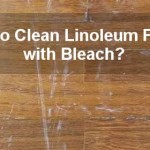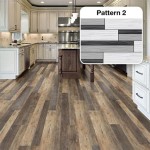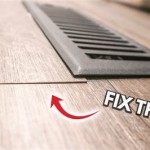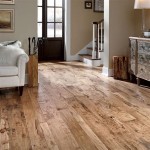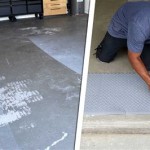Is Particle Board Flooring Waterproof? Understanding Its Water Resistance
Particle board, also known as chipboard, is an engineered wood product manufactured from wood chips, sawmill shavings, or even sawdust. These wood particles are mixed with a resin adhesive and then pressed and extruded to form sheets. Particle board is often used in furniture construction, shelving, and underlayment for flooring. Its affordability and consistent surface make it an attractive option for many applications. However, its susceptibility to water damage is a significant concern, particularly when considering its use as flooring.
The crucial question remains: Is particle board flooring waterproof? The short answer is generally no. Standard particle board is highly vulnerable to water absorption and subsequent damage. When exposed to moisture, the wood particles swell, causing the board to lose its structural integrity. This can lead to warping, crumbling, and irreversible damage. While some manufacturers offer moisture-resistant variations, it’s essential to understand the limitations and distinctions between water resistance and waterproofing.
The Composition of Particle Board and Its Vulnerability to Water
The inherent composition of particle board makes it susceptible to water damage. The manufacturing process involves compressing wood particles with an adhesive. While the adhesive provides some initial bonding strength, it does not create a waterproof barrier. The spaces between the wood particles allow water to penetrate the board easily. Once water enters, it causes the wood fibers to expand. This expansion weakens the bond between the wood particles and the adhesive, leading to the degradation of the particle board.
Furthermore, the type of adhesive used in the manufacturing process can influence the particle board's resistance to moisture. Some adhesives are more water-resistant than others. However, even the most water-resistant adhesives are not impermeable, and prolonged exposure to water will eventually compromise their effectiveness. The density of the particle board also plays a role. Denser particle board may offer slightly better resistance to water penetration, but it is still not a reliable waterproof solution.
The swelling process is a critical factor in understanding the damage mechanism. As the wood particles absorb moisture, they expand outwards. This expansion puts stress on the surrounding particles and the adhesive bonds. Repeated exposure to moisture can cause the expansion to become permanent, leading to irreversible deformation of the particle board. This deformation manifests as warping, buckling, or even complete structural failure.
Understanding Water Resistance vs. Waterproofing
It is crucial to distinguish between water resistance and waterproofing when discussing particle board. Water resistance implies that a material can withstand some exposure to water without significant damage. This means that the material can repel water to a certain degree or resist water absorption for a limited time. Waterproofing, on the other hand, implies that a material is completely impermeable to water, preventing any water from passing through it.
Standard particle board is neither water-resistant nor waterproof. It readily absorbs water and is quickly damaged by even brief exposure. However, some manufacturers produce moisture-resistant (MR) particle board, which is designed to offer improved resistance to water absorption. MR particle board typically incorporates water-repellent additives into the adhesive mixture and may be coated with a sealant to further protect it from moisture.
Despite these improvements, MR particle board is not waterproof. It can withstand spills and minor moisture exposure better than standard particle board, but it is still vulnerable to prolonged or excessive water exposure. If MR particle board is consistently exposed to moisture, it will eventually swell, warp, and degrade. Therefore, it is crucial to carefully consider the intended application and the potential for moisture exposure when choosing particle board for flooring or other uses.
To increase the water resistance of particle board, various surface treatments can be applied. These treatments may include sealants, paints, or laminates. Sealants create a protective barrier that prevents water from penetrating the board. Paints can provide a similar level of protection, especially if they are specifically formulated for use in damp environments. Laminates, such as those used in laminate flooring, can offer a durable and water-resistant surface. However, even with these treatments, it is essential to address any potential sources of moisture to prevent water damage.
Alternatives to Particle Board Flooring in Moisture-Prone Areas
Given the susceptibility of particle board to water damage, it is generally not recommended for use in areas prone to moisture exposure, such as bathrooms, kitchens, and basements. In these environments, alternative flooring materials that offer better water resistance or waterproofing properties are more suitable. Several options are available, each with its own advantages and disadvantages.
One popular alternative is vinyl flooring. Vinyl is a synthetic material that is inherently waterproof. It is available in various forms, including sheet vinyl, vinyl tiles, and luxury vinyl planks (LVP). Sheet vinyl provides a seamless surface that prevents water from seeping through. Vinyl tiles and LVP offer similar water resistance but may have seams that could potentially allow water to penetrate if not properly sealed. Vinyl flooring is durable, easy to clean, and relatively affordable, making it a practical choice for moisture-prone areas.
Another option is ceramic or porcelain tile. These materials are completely waterproof and highly durable. They are impervious to water damage and can withstand heavy foot traffic. Tile is available in a wide range of styles, colors, and sizes, offering numerous design possibilities. However, tile can be more expensive to install than vinyl flooring, and it may require professional installation to ensure a watertight seal.
Concrete is another waterproof flooring option, although it typically requires a sealant to prevent staining and moisture absorption from within the slab. Properly sealed concrete floors are extremely durable and can withstand high levels of moisture. Concrete can be stained, polished, or otherwise treated to create a variety of aesthetic effects.
Engineered wood flooring with a waterproof core is also becoming an increasingly popular option. These products typically consist of a wood veneer layer bonded to a waterproof core material, such as a plastic composite. Engineered wood flooring offers the aesthetic appeal of real wood while providing enhanced water resistance. However, it is important to carefully review the manufacturer's specifications to ensure that the product is truly waterproof and suitable for the intended application. Some engineered wood products are only water-resistant, not waterproof.
When choosing flooring for moisture-prone areas, it is essential to consider the specific conditions and the potential for water exposure. Evaluate the level of water resistance or waterproofing required, the durability of the material, the cost of installation, and the aesthetic appeal. By carefully weighing these factors, it is possible to select a flooring material that will provide long-lasting performance and protection against water damage.
Ultimately, particle board is best suited for applications where moisture exposure is minimal. Using it as the primary flooring in a bathroom, kitchen, or laundry room is generally not a good decision, unless it is covered by a completely waterproof membrane and never exposed to moisture. Investing in a more water-resistant or waterproof flooring option will help prevent costly repairs and replacements in the long run.

Particle Board Flooring And Waterproofing

Gripset Waterproofing Blog Particle Board Flooring

Particle Board Water Damage Dos And Don Ts Doityourself Com

Particle Board Vs Plywood What Are Their Differences

High Quality Moisture Resistant Waterproof Particle Board And Chipboard

Engineered Hardwood Vs Laminate Flooring

Gripset Waterproofing Blog Particle Board Flooring

Waterproof Spc Flooring

Tongue Groove Particle Board Durable Flooring

Ultimate Guide To Particle Board Flooring In Melbourne
See Also

